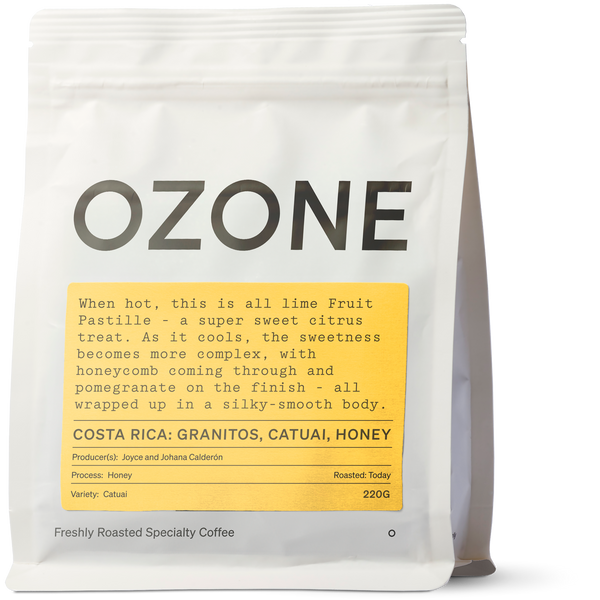Honey & Pulped Natural Coffee Processing
A Technical Dive into Two Sweetly Similar Methods
In the nuanced world of coffee processing, Honey and Pulped Natural methods occupy a fascinating middle ground between washed and natural processes. Both techniques aim to balance clarity and sweetness, but they differ in execution, regional style, and flavour outcomes. Let’s explore the technical details behind these methods and how they shape the coffee in your cup.

Shared Technical Foundations
Both methods begin with selective harvesting of ripe cherries, followed by mechanical depulping - removing the outer skin while retaining varying amounts of mucilage, the sticky, sugar-rich layer surrounding the bean.
The beans are then dried with mucilage intact, typically on raised beds or patios. This drying phase is critical: the mucilage ferments slightly and infuses the bean with sugars and organic acids, contributing to body, sweetness, and complexity.
- Harvesting: Only ripe cherries are selected.
- Depulping: Skin is removed, mucilage is retained.
- Drying: Beans are dried with mucilage, turned regularly to prevent mould.
- Resting & Milling: After drying, beans are rested (reposo), then hulled to remove parchment.
For a deeper dive into the science of mucilage and fermentation, see the SCA’s Fermentation Effect study.

Honey Processed Coffee: A Spectrum of Mucilage and Flavour
Honey processing is highly customisable, with producers adjusting the amount of mucilage left on the bean and the drying conditions to influence flavour. The name “honey” refers to the sticky texture of the mucilage, not the use of actual honey.
| Type | Mucilage Retained | Drying Time | Common Flavour Profiles |
|---|---|---|---|
| White Honey | ~10–20% | 6–8 days | Clean, crisp, light body |
| Yellow Honey | ~25–50% | 8–10 days | Balanced, mild sweetness |
| Gold Honey | ~50–75% | 10–12 days | Rich, syrupy, golden fruit notes |
| Red Honey | ~75–90% | 12–15 days | Fruity, winey, medium body |
| Black Honey | 90–100% | 15–20+ days | Intense, jammy, full-bodied |
Pulped Natural Coffee: Brazil’s Controlled Sweetness
Pulped natural processing, developed in Brazil, follows a similar start, depulping without fermentation, but typically retains a uniform layer of mucilage and uses direct sun drying on patios or mechanical dryers.
- Depulping: Done immediately after harvest.
- No fermentation: Beans go straight to drying.
- Drying: Often on patios or mechanical dryers, turned frequently.
- Flavour: Sweet, nutty, chocolatey, with low acidity and heavier body.
For more on the evolution of mucilage removal and sustainability, see the SCA’s article on water-saving demucilagers.

Latest Trends in Honey & Pulped Natural Processing
- Hybrid Fermentations: Combining honey processing with anaerobic or yeast-inoculated fermentations for complex flavour profiles.
- Microbial Control: Use of controlled microbial environments and inoculants to steer fermentation outcomes.
- Sustainability Focus: Honey processing is increasingly favoured in water-scarce regions due to its low water usage.
- Revival of Pulped Natural: In Brazil, pulped natural is being rebranded with more traceability and experimental drying techniques.
Key Differences at a Glance
| Feature | Honey Processed | Pulped Natural |
|---|---|---|
| Mucilage Retention | Variable (white to black, incl. gold) | Uniform |
| Fermentation | Passive or enhanced | None |
| Drying Method | Often shaded, slower | Direct sun or mechanical |
| Regional Focus | Central America, Asia | Brazil |
| Flavour Range | Fruity, floral, syrupy | Nutty, chocolatey, balanced |
| Customisation | High (5+ styles) | Low (standardised) |



![Costa Rica: Arbar, Geisha [125g]](http://ozonecoffee.co.uk/cdn/shop/files/Ozone_Coffee_Square_2025_CRIARBARGeisha_600x.png?v=1762173783)